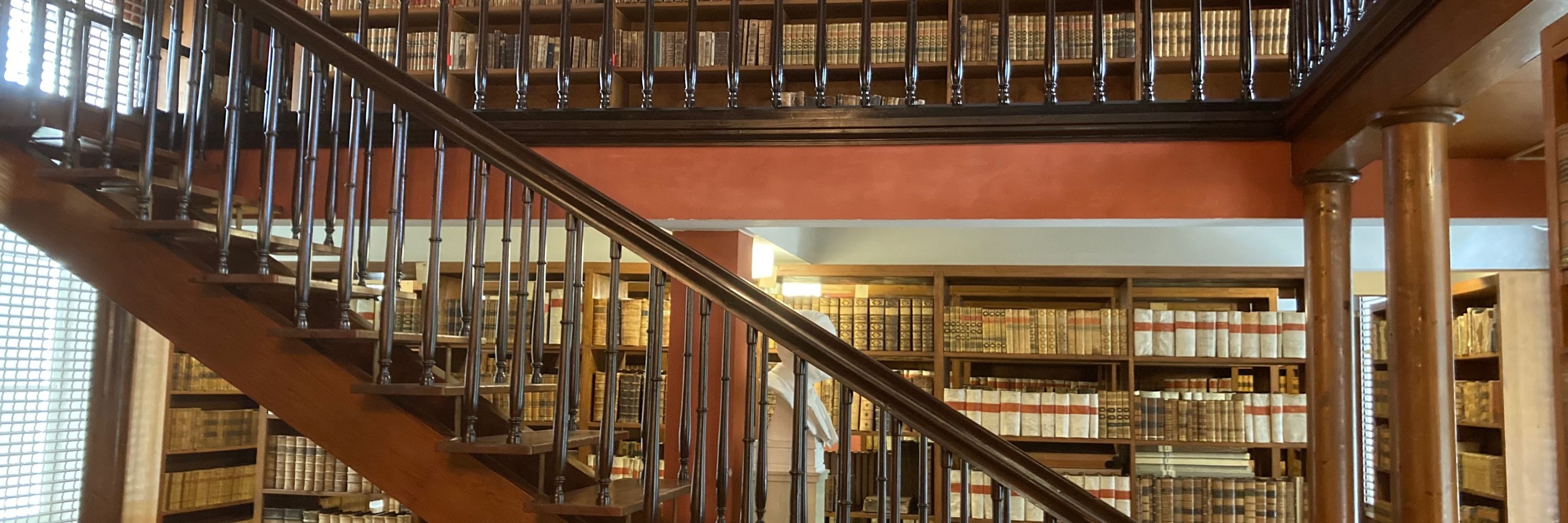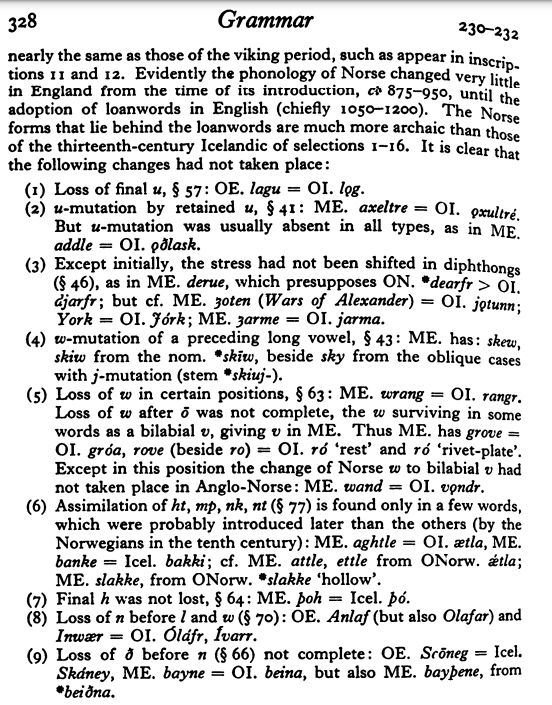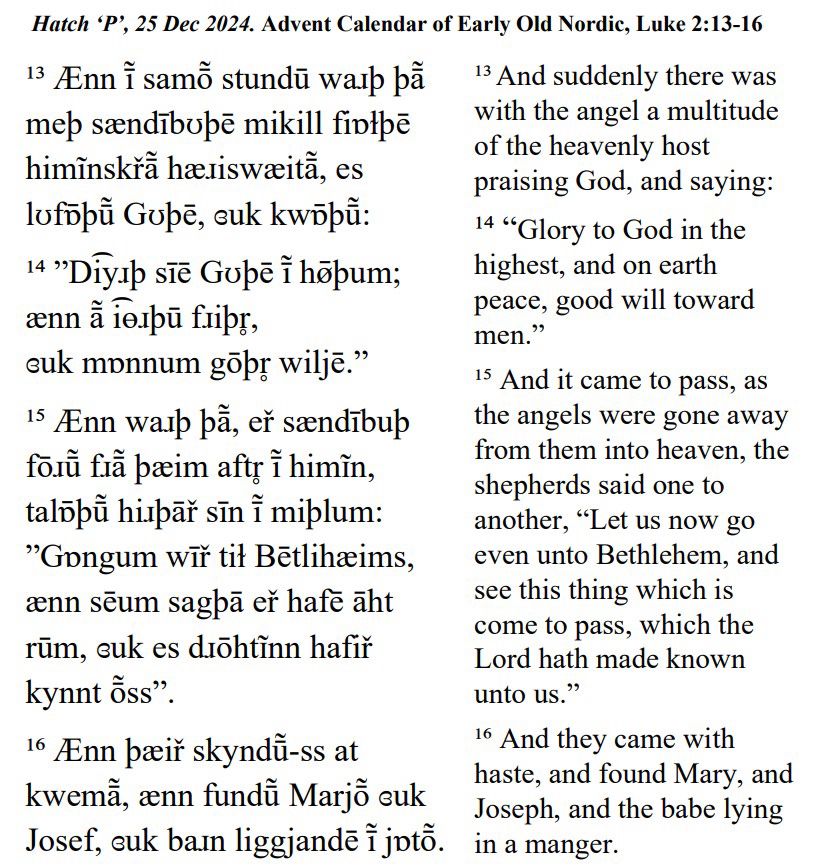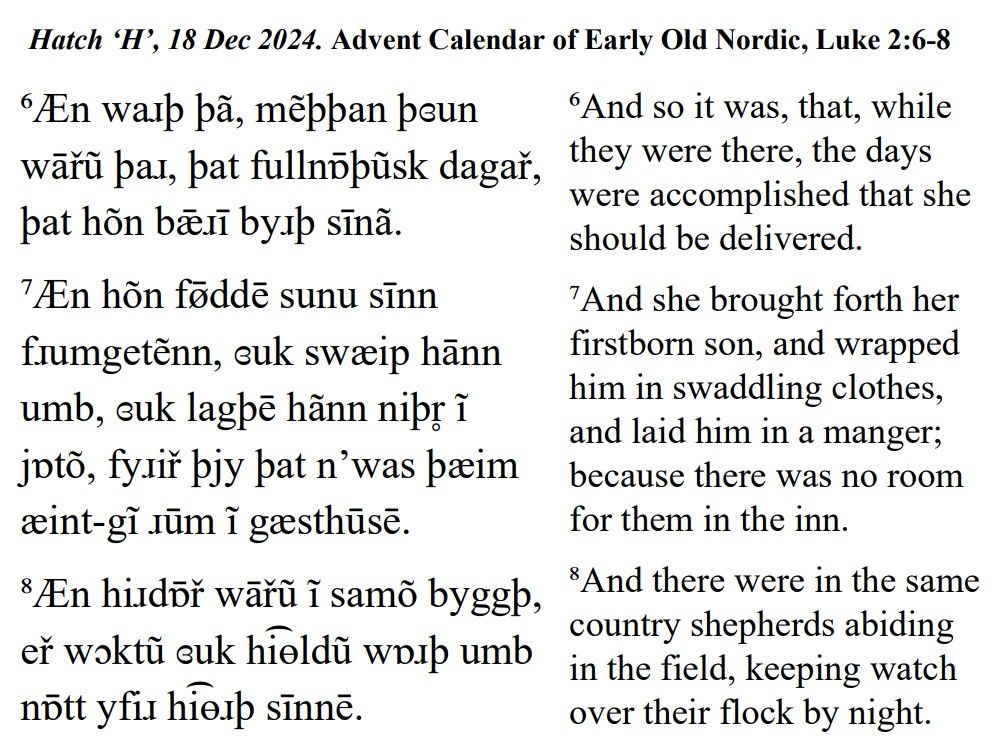
Researcher affiliated with @utu.fi
#langsky
www.facebook.com/groups/swedi...

www.facebook.com/groups/swedi...
Note that when Icelandic inserts -u- it is lexicalised, as in ”fiskur+inn” ’the fish’ whereas Old Swedish has fiskær+inn=fiskrin
#langsky

Note that when Icelandic inserts -u- it is lexicalised, as in ”fiskur+inn” ’the fish’ whereas Old Swedish has fiskær+inn=fiskrin
#langsky
Singing ”bara bada, bara bada” would also work!

Singing ”bara bada, bara bada” would also work!
Middle English "aghtle" cf. Old Icelandic "ætla".

Middle English "aghtle" cf. Old Icelandic "ætla".
It is not sure whether the infinitive of *kwem- ’come’ is *kwemā̃ or *kumā̃, but I stay with the former. In the previous verse I change ’made known’ to *kynnt and ’happened’ to *āht rūm.
This is the last verse translated. Final notes tomorrow.
#langsky

It is not sure whether the infinitive of *kwem- ’come’ is *kwemā̃ or *kumā̃, but I stay with the former. In the previous verse I change ’made known’ to *kynnt and ’happened’ to *āht rūm.
This is the last verse translated. Final notes tomorrow.
#langsky

The shepherds decide to go to Betlehem. The Greek syntax is very complex here.
For ”made known to” both ’gifa til känna’ and ’kunngöra’ are calqued on German. The moribund verb *tɶyjā̃/táþa ’do’ is used, then assumed more idiomatic than ”göra”.
#langsky

The shepherds decide to go to Betlehem. The Greek syntax is very complex here.
For ”made known to” both ’gifa til känna’ and ’kunngöra’ are calqued on German. The moribund verb *tɶyjā̃/táþa ’do’ is used, then assumed more idiomatic than ”göra”.
#langsky
Gōþā i͡uł!
In this most famous x-mas chant ”peace on earth and to men good will” there are difficult reconstruction problems. The Greek δόξα ’glory’ is one problem and the word for height/highest is even more difficult! (cont.)👇🏻
#langsky

Gōþā i͡uł!
In this most famous x-mas chant ”peace on earth and to men good will” there are difficult reconstruction problems. The Greek δόξα ’glory’ is one problem and the word for height/highest is even more difficult! (cont.)👇🏻
#langsky
The multitude of the heavenly host joins the angel, and prepares to start chanting.
The word for ’host’ ”hæɹiswæitā̃” exists in both Old Swedish and Old Icelandic. All other synonyms are German loanwords.
#langsky

The multitude of the heavenly host joins the angel, and prepares to start chanting.
The word for ’host’ ”hæɹiswæitā̃” exists in both Old Swedish and Old Icelandic. All other synonyms are German loanwords.
#langsky
Here a deictic pronoun in neuter *hĩnt ’that’ [shall be the sign] is used.
This (or *inn) is the embryo for the determining article, emblematic for later Nordic.
Still, in Swedish dialects, e.g. in Finland, you may hear ”hitt” in this emphatic use (cont…👇🏻)
#langsky

Here a deictic pronoun in neuter *hĩnt ’that’ [shall be the sign] is used.
This (or *inn) is the embryo for the determining article, emblematic for later Nordic.
Still, in Swedish dialects, e.g. in Finland, you may hear ”hitt” in this emphatic use (cont…👇🏻)
#langsky
The angel continues to proclaim the birth of Khristos ’the anointed’. I resist reconstructing a past participle of *smyrwã ’anoint’ (the later smurðr cannot possibly be regular), but stick to the principle of nativising the original: Χριστὸς
meaning: Hɹistr̥
#langsky

The angel continues to proclaim the birth of Khristos ’the anointed’. I resist reconstructing a past participle of *smyrwã ’anoint’ (the later smurðr cannot possibly be regular), but stick to the principle of nativising the original: Χριστὸς
meaning: Hɹistr̥
#langsky
Now the angel speaks up about good tidings:
Here the east/west divide is older than the reconstructed language and I chose the eastern forms: *jak & *iþuř (western *ek & *yþuř).
In the case of *Sēiþ! the form only looks eastern. In fact, it is just older.
#langsky

Now the angel speaks up about good tidings:
Here the east/west divide is older than the reconstructed language and I chose the eastern forms: *jak & *iþuř (western *ek & *yþuř).
In the case of *Sēiþ! the form only looks eastern. In fact, it is just older.
#langsky
Under this hatch the Angel of the Lord appears. All nordic languages and Gothic have a loanword ängel/ engill etc.
In line with the translation principles appropriate for very early language contact I still use the native word *sændībʊþ, and also *dɹōttẽns.
#langsky

Under this hatch the Angel of the Lord appears. All nordic languages and Gothic have a loanword ängel/ engill etc.
In line with the translation principles appropriate for very early language contact I still use the native word *sændībʊþ, and also *dɹōttẽns.
#langsky
The shepherds are introduced to the story. Here are two words (hi͡ɵldũ ’held’ pl. & hi͡ɵɹþ ’flock’) where the segmentation of the rounded breaking diphthong is delayed by the following liquid, notwithstanding that the labial umlaut isn’t of the earliest kind.
#langsky

The shepherds are introduced to the story. Here are two words (hi͡ɵldũ ’held’ pl. & hi͡ɵɹþ ’flock’) where the segmentation of the rounded breaking diphthong is delayed by the following liquid, notwithstanding that the labial umlaut isn’t of the earliest kind.
#langsky
Here ”sunu” occurs unreduced, so typical for runic attestations of the Early Old Nordic stage.
I use *swaip instead of older *sezwaip for the reduplicative verb.
For the neutralised word-final ’r̥’ (after coronal obstruent) I added a diacritic for devoicing.
#langsky

Here ”sunu” occurs unreduced, so typical for runic attestations of the Early Old Nordic stage.
I use *swaip instead of older *sezwaip for the reduplicative verb.
For the neutralised word-final ’r̥’ (after coronal obstruent) I added a diacritic for devoicing.
#langsky
It is not clear what stage of North Germanic that would qualify as the ”Proto-” language. Even at this early stage (650-850 CE) there were differences. I reconstruct ”bǣrī byrþ sīnã”. In fact, Old East Nordic point to ”bārī”, while O(W)N point to ”byrþ sīnn”.
#langsky

It is not clear what stage of North Germanic that would qualify as the ”Proto-” language. Even at this early stage (650-850 CE) there were differences. I reconstruct ”bǣrī byrþ sīnã”. In fact, Old East Nordic point to ”bārī”, while O(W)N point to ”byrþ sīnn”.
#langsky
Before opening hatch F, I here post the text as amended along the way (credit especially to @thorgeir.bsky.social). The last corr being the compound name Natsaɹēþãboɹg in passage 4.
#langsky

Before opening hatch F, I here post the text as amended along the way (credit especially to @thorgeir.bsky.social). The last corr being the compound name Natsaɹēþãboɹg in passage 4.
#langsky
The word õlẽtt-”, literally ”unlight”, means that Maria ’carried a child’ (as the story goes).
Indeed, this Icelandic idiomatic expression has an Old Swedish cognate and hence may perhaps be reconstructed for this early stage.
svenska.se/saob/?sok=ol...
#langsky

The word õlẽtt-”, literally ”unlight”, means that Maria ’carried a child’ (as the story goes).
Indeed, this Icelandic idiomatic expression has an Old Swedish cognate and hence may perhaps be reconstructed for this early stage.
svenska.se/saob/?sok=ol...
#langsky
The word to become the Scandinavian conjunction ”og/och” ’and’ first appeared in the meaning of German ”auch”: ’also’ ’in addition’. Here ”ɞuk” occurs twice.
Judging from descendants in the peripheries, the diphthong was labialised early, not just fronted.
#langsky

The word to become the Scandinavian conjunction ”og/och” ’and’ first appeared in the meaning of German ”auch”: ’also’ ’in addition’. Here ”ɞuk” occurs twice.
Judging from descendants in the peripheries, the diphthong was labialised early, not just fronted.
#langsky
At this stage of the language some words had still one syllable more than in later Old Norse, the second wave of ”syncope” was yet to come. Thus ”hwæɹiř” ’each one’, which had been *hwaɹjaz only 2-3 centuries earlier, was to become ”hwerr” in Old Norse.
#langsky

At this stage of the language some words had still one syllable more than in later Old Norse, the second wave of ”syncope” was yet to come. Thus ”hwæɹiř” ’each one’, which had been *hwaɹjaz only 2-3 centuries earlier, was to become ”hwerr” in Old Norse.
#langsky
To me a zero-grade ō-stem seems derived from a noun, such as n. “skrif”. The Icelandic etymological dictionary acknowledges that possibility: malid.is/leit/skrifa

To me a zero-grade ō-stem seems derived from a noun, such as n. “skrif”. The Icelandic etymological dictionary acknowledges that possibility: malid.is/leit/skrifa
Problem: whence nominatives of masculine n-stems get a non-fronting -i in Old Norse? Here a solution is used that it evolved from nasalised *-ẽ, as in “stjȳrandẽ”. A similar solution might explain similar problems in participles in *-in/-it, as in “skɹifẽt”.
#langsky

Problem: whence nominatives of masculine n-stems get a non-fronting -i in Old Norse? Here a solution is used that it evolved from nasalised *-ẽ, as in “stjȳrandẽ”. A similar solution might explain similar problems in participles in *-in/-it, as in “skɹifẽt”.
#langsky
Different from later Old Norse, the velarised approximant rhotic <ɹ> contrasted with a rarer coronal rhotic, as in “allř” below. After coronal obstruents the contrast was neutralised, as in “miþgaɹþr”.
Further, unstressed vowels were frequently long, and at times nasalised.
#langsky

Different from later Old Norse, the velarised approximant rhotic <ɹ> contrasted with a rarer coronal rhotic, as in “allř” below. After coronal obstruents the contrast was neutralised, as in “miþgaɹþr”.
Further, unstressed vowels were frequently long, and at times nasalised.
#langsky



